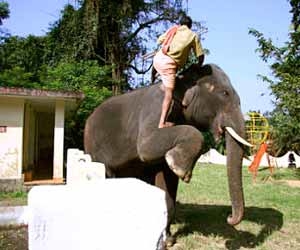Pet and Animal Handler Jobs
Whether you want to work in the cat or dog show arena, on a search and rescue team, or even in a hospital, the common thread is that you need to become a pet (most likely dog) handler, which is a very hands-on animal job that usually requires you to live with, raise and care for said pet.
For those who want to go the search and rescue, bomb or drug sniffing, or police dog route, there is specialized training that you need to have.

Other good qualities an animal handler should have include being a team player, enjoying working outside and in all kinds of weather and conditions, being in good shape physically to be able to keep up with your dog, in most cases passing a criminal background check and having a background in either law enforcement, rescue operations or first aid. Search and rescue, bomb or drug sniffing and police canine units also generally warrant that the dog lives with its handler, so you need to be sure you’re ready for all dog, all the time.
If you choose to become a dog handler for a certified Canine Good Citizen, you will most likely be volunteering your time to take your dog to visit with patients in hospitals and assisted living homes. The Humane Society offers a pet therapy training program, which trains dogs to remain calm around wheelchairs, walkers and IV poles, as well as maintain a gentle demeanor that lends itself to being around the elderly or frail.
Your local humane society will often offer both training classes and testing to certify your dog as an American Kennel Club (AKC) Canine Good Citizen. For example, to join Therapy Dogs International (TDI), your dog must be tested and evaluated by a Certified TDI Evaluator. It must pass a temperament evaluation for suitability to become a Therapy Dog, this above and beyond the AKC Canine Good Citizen Test (CGC).
The AKC CGC Test features 10 evaluation components, including the ability to accept a friendly stranger who approaches; showing no reaction to being around medical equipment such as wheelchairs, crutches, walkers and the like; sitting politely while being petted; accepting grooming even from strangers; walking politely on a leash as well as in a crowd; sitting and lying down on command; staying until released; coming when called; remaining polite in the company of other dogs; taking distractions such as falling objects in stride. It is also being left with a trusted person and maintaining good manners all the while.
Most of the time, in addition to the above requirements, pet therapy handlers must ensure their dog(s) have documented proof of certification, remain up to date on certification, have been properly vaccinated for DHLPP (Distemper, Hepatitis, Leptospirosis, Para-Influenza, Parvo Virus, Carona Virus), Rabies and Bordetella, and are following a heartworm and flea prevention program.
While working with canines in search and rescue, bomb or drug detection or in law enforcement, as well as in the hospital or clinical setting may sound like challenging handler occupations, perhaps the most difficult career to break into is that of show animal handler.
Often, show animal handlers are hired by the owners of the cats/dogs to provide showing expertise (it’s along the lines of hiring a beauty pageant consultant for your child, and probably just as competitive). Of course, most pet handlers in this area come from a long line of handlers and grew up in the show animal industry, perhaps in a family that bred animals for showing purposes.
Therefore, the best way to break into this career is by learning everything you can about the species you want to work with (canine or feline), gaining training and grooming experience, and spending time at cat and dog shows picking the brains of the handlers you meet there.

